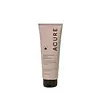What's inside
What's inside
 Key Ingredients
Key Ingredients

 Benefits
Benefits

 Concerns
Concerns

 Ingredients Side-by-side
Ingredients Side-by-side

Water
Skin ConditioningGlyceryl Stearate Se
EmulsifyingGlycerin
HumectantHelianthus Annuus Seed Oil
EmollientCetearyl Olivate
Theobroma Cacao Seed Butter
EmollientAloe Barbadensis Leaf Juice
Skin ConditioningSorbitan Olivate
EmulsifyingGlyceryl Laurate
EmollientTocopherol
AntioxidantSqualane
EmollientOlea Europaea Fruit Oil
MaskingHippophae Rhamnoides Seed Oil
Skin ProtectingLimnanthes Alba Seed Oil
Skin ConditioningCarthamus Tinctorius Seed Oil
MaskingAvena Sativa Kernel Flour
AbrasiveXanthan Gum
EmulsifyingSodium Levulinate
Skin ConditioningCocoglycerides
EmollientPotassium Sorbate
PreservativeWater, Glyceryl Stearate Se, Glycerin, Helianthus Annuus Seed Oil, Cetearyl Olivate, Theobroma Cacao Seed Butter, Aloe Barbadensis Leaf Juice, Sorbitan Olivate, Glyceryl Laurate, Tocopherol, Squalane, Olea Europaea Fruit Oil, Hippophae Rhamnoides Seed Oil, Limnanthes Alba Seed Oil, Carthamus Tinctorius Seed Oil, Avena Sativa Kernel Flour, Xanthan Gum, Sodium Levulinate, Cocoglycerides, Potassium Sorbate
Aloe Barbadensis Leaf Juice
Skin ConditioningSapindus Mukorossi Seed
Skin ConditioningGlycerin
HumectantCaprylic/Capric Triglyceride
MaskingCetearyl Olivate
Sorbitan Olivate
EmulsifyingCoco-Caprylate/Caprate
EmollientCetearyl Alcohol
Emollient1,2-Hexanediol
Skin ConditioningSodium Acrylates Copolymer
Butyrospermum Parkii Butter
Skin ConditioningTheobroma Cacao Seed Butter
EmollientHydroxyacetophenone
AntioxidantAvena Sativa Kernel Flour
AbrasiveChamomilla Recutita Extract
Skin ConditioningSodium Levulinate
Skin ConditioningSodium Anisate
AntimicrobialAloe Barbadensis Leaf Juice, Sapindus Mukorossi Seed, Glycerin, Caprylic/Capric Triglyceride, Cetearyl Olivate, Sorbitan Olivate, Coco-Caprylate/Caprate, Cetearyl Alcohol, 1,2-Hexanediol, Sodium Acrylates Copolymer, Butyrospermum Parkii Butter, Theobroma Cacao Seed Butter, Hydroxyacetophenone, Avena Sativa Kernel Flour, Chamomilla Recutita Extract, Sodium Levulinate, Sodium Anisate
Ingredients Explained
These ingredients are found in both products.
Ingredients higher up in an ingredient list are typically present in a larger amount.
Aloe Barbadensis Leaf Juice comes from leaves of the aloe plant. Aloe Barbadensis Leaf Juice is best known for helping to soothe sunburns. It is also anti-inflammatory, moisturizing, antiseptic, and can help heal wounds.
Aloe is packed with good stuff including Vitamins A, C, and E. These vitamins are antioxidants, which help fight free-radicals and the damage they may cause. Free-radicals are molecules that may damage your skin cells, such as pollution.
Aloe Barbadensis Leaf Juice also contains sugars. These sugars come in the form of monosaccharides and polysaccharides, folic acid, and choline. These sugars are able to help bind moisture to skin.
It also contains minerals such as calcium, 12 anthraquinones, fatty acids, amino acids, and Vitamin B12.
Learn more about Aloe Barbadensis Leaf JuiceOatmeal flour is created by grinding down the kernels of oats. Oatmeal helps sooth, hydrate, and protect the skin.
Oatmeal kernel flour has abrasive, or exfoliating, properties.
Learn all about the skin benefits of colloidal oatmeal here.
Learn more about Avena Sativa Kernel FlourCetearyl Olivate is an emulsifier and texture enhancer. It is derived from the fatty acids of olive oil and Cetearyl alcohol, and is biodegradable.
As an emulsifier, it is used to prevent oils and waters from separating. It can also
Manufacturers use the name Olivem 1000. This ingredient has been found to preserve the natural microbiome of skin. Having a healthy microbiome helps keep our skin healthy and protects against harmful bacteria. This ingredient is grouped with Sorbitan Olivate under the name Olivem 1000.
Learn more about Cetearyl OlivateGlycerin is already naturally found in your skin. It helps moisturize and protect your skin.
A study from 2016 found glycerin to be more effective as a humectant than AHAs and hyaluronic acid.
As a humectant, it helps the skin stay hydrated by pulling moisture to your skin. The low molecular weight of glycerin allows it to pull moisture into the deeper layers of your skin.
Hydrated skin improves your skin barrier; Your skin barrier helps protect against irritants and bacteria.
Glycerin has also been found to have antimicrobial and antiviral properties. Due to these properties, glycerin is often used in wound and burn treatments.
In cosmetics, glycerin is usually derived from plants such as soybean or palm. However, it can also be sourced from animals, such as tallow or animal fat.
This ingredient is organic, colorless, odorless, and non-toxic.
Glycerin is the name for this ingredient in American English. British English uses Glycerol/Glycerine.
Learn more about GlycerinSodium levulinate is the a sodium salt of Levulinic Acid. If dissolved in an aqueous solution, the two ingredients become identical.
It is a skin conditioning agent, meaning it helps soften and hydrate your skin.
According to Cosmetic Ingredient Review, the highest amounts of sodium levulinate are found in mouthwashes at 0.62%.
Learn more about Sodium LevulinateSorbitan Olivate is created from the fatty acids in olive oil and sorbitol.
This ingredient is an oil in water emulsifier. It helps stabilize a product by preventing oils and waters from separating. Sorbitan Olivate also helps hydrate the skin.
Manufacturers sell sorbitan olivate under the name OliveM 1000. OliveM 1000 a multifunctional ingredient. It is self-emulsifying. According to a manufacturer, OliveM 1000 does not disrupt natural skin biome.
Due to its olive oil base, this ingredient may not be fungal-acne safe.
Learn more about Sorbitan OlivateTheobroma Cacao Seed Butter comes from the Theobroma cacoa, or Cacao tree. Cacao trees are native to tropical landscapes.
Like other plant butters, Cacao seed butter is an emollient. Emollients help soothe and soften your skin. By creating a barrier to trap moisture in, emollients help keep your skin hydrated.
Cacao seed butter contains antioxidants known as polyphenols. Antioxidants help fight free-radical molecules by stabilizing them. Unstable free-radicals may cause damage to your skin cells. Antioxidants may help with anti-aging.
Theobroma Cacao Seed Butter can be bad for acne prone skin.
Learn more about Theobroma Cacao Seed Butter